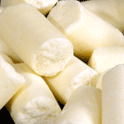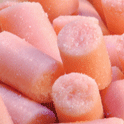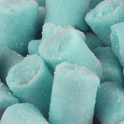|
|
the atherosclerosis phenotype by adding in fat calories (i.e. dairy butter, hydrogenated coconut oil) in place of purified carbohydrate calories only (i.e. sucrose, corn starch). This method of modification maintains nutrient to calorie ratios, which is important as animals typically eat for calories, not weight of food. Furthermore, casein-based purified diets contain no phytoestrogens (or other phytochemicals) unlike typical grain-based chows which can have highly variable levels (6). Since the presence of phytoestrogen containing sources (i.e. soy protein and isolated isoflavones) has been found to influence atherosclerosis and lipoprotein metabolism in various rodent models (7-13), the use of purified Western-type diets provides a clean ‘reagent’ for inducing this disease. That being said, not all rodent models respond the same to a given Western-type purified diet due to genetic differences. This review will highlight commonly used dietary factors able to influence LDL-C and atherosclerosis in various rodent models, as well as some of the potential benefits and drawbacks associated with using these models for disease induction.
Wild Type Mice and Rats
Wild type mice, such as the C57BL/6 mouse, are relatively resistant to atherosclerosis, but have the capacity to develop mild atherosclerosis under certain conditions. Unlike humans, they typically have a very low proportion of TC as LDL-C, and most cholesterol in circulation is found in high density lipoproteins (HDL-C), which contributes to their reduced susceptibility to atherosclerosis. Western-type diets containing moderately high levels of SF (~35 kcal% fat, ), as (cocoa butter, palm oil, or dairy butter), cholesterol (~0.5 to 1% w/w) and cholic acid (~0.1% to 0.5% w/w), are capable of inducing elevations in TC and LDL-C and mild atherosclerosis (i.e. cholesterol laden foam cells, fatty deposits or streaks) in some mouse strains after 12 weeks (14-16). The presence of cholic acid aids cholesterol and fat absorption, and also suppresses conversion of cholesterol to bile acids (17). This latter effect reduces removal of cholesterol and increases cholesterol levels (in particular, non-HDL-C) which allows atherosclerosis induction to occur in susceptible mouse strains. While it is possible to induce atherosclerosis in some mice, it is important to realize that the presence of cholic acid can influence transcription factors controlling genes involved with regulating lipoprotein metabolism and inflammation, both of which are important in the development of atherosclerosis (16, 17), and can also promote gallstones in certain mouse strains (18, 19).
Like mice, commonly used outbred rat strains (i.e. Sprague-Dawley, Wistar) typically have high levels of HDL-C and low levels of LDL-C. Western-type diets (~45 kcal% fat as hydrogenated coconut oil) or even low-fat diets (~12 kcal% fat as corn oil) with high levels of cholesterol (~1% w/w) and cholic acid (0.25% - 0.5% w/w) are capable of promoting elevations in TC and LDL-C in Sprague-Dawley or Wistar rats (20-22) likely by reducing bile acid production (23). Despite such elevations, this alone will not promote atherosclerosis in rats unless a thyroid hormone inhibitor (2-thiouracil, ~0.5% w/w) is added to the diet (24). However, rats that have been selectively bred with spontaneous gene mutations such as the JCR:LA Corpulent rat can develop hypercholesterolemia and are sensitive to dietary cholesterol without the need for cholic acid or thyroid hormone inhibitors (25).
Hamsters
Like mice and rats, hamsters typically have a high percentage of HDL-C. However, Western-type diets high in cholesterol (~0.5% w/w) and SF (15 – 20% butter fat w/w) can elevate plasma TC and LDL-C and promote appreciable atherosclerosis (i.e. fatty streaks, foam cells) without the use of cholic acid in as little as 6 weeks (26). Hamsters don’t require cholic acid because dietary cholesterol (even as high as 1% w/w) has little influence on their bile acid synthesis pathways (20), allowing excess dietary cholesterol to enter the blood circulation rather than being converted to bile acids and excreted in the feces. Furthermore, these animals possess cholesteryl ester transfer protein (CETP) like humans (but not mice and rats), which allows the transfer of cholesterol from HDL to LDL particles in plasma. Certain SFs (relative to unsaturated fats) and cholesterol both have some ability to promote this pathway (27), and this, in combination with their ability to reduce LDL-C uptake by the liver (28) allows for significant elevations in LDL-C and eventual atherosclerosis induction. These animals are highly sensitive to particular saturated fatty acids as a Western-type diet high in potent cholesterol-raising SF from hydrogenated coconut oil (lauric and myristic acids) can cause even more aortic cholesterol accumulation than a high cholesterol (0.15%) diet with a more cholesterol neutral fat such as cocoa butter (palmitic, oleic and stearic acids) (29). Additionally, dietary protein type can also influence LDL-C levels and atherosclerosis as hamsters fed casein and lactalbumin had higher levels than those fed an equal amount of soy protein, and like humans, males may be more susceptible than females (11).
Guinea Pigs
Unlike other rodents, guinea pigs have a cholesterol profile similar to most humans (higher proportion TC as LDL-C) when maintained on a low fat/low cholesterol diet. Like hamsters, they possess CETP (30) and do not require cholic acid for atherosclerosis induction and cholesterol elevation (31, 32). They are highly sensitive to changes in dietary fatty acid composition as Western-type diets high in SF (i.e. palm kernel oil, ~80% SF) without dietary cholesterol can elevate TC and LDL-C levels relative to those containing less SF (i.e. palm oil, beef tallow, ~50% SF) (31). The type of protein (i.e. high casein to soy protein ratio) (32), or carbohydrate (i.e. high sucrose) (33) can exacerbate the condition. The use of a Western-type diet with added cholesterol (at least up to 0.3%, w/w) can cause further elevations in TC and LDL-C and induce atherosclerotic lesions (i.e. fatty streaks) after 12 weeks (34-36). The carbohydrate to fat ratio also has been found to have some importance in promoting atherosclerosis as high cholesterol diets (0.25%, w/w) that are high in carbohydrate (42 kcal%) and moderately high in fat (35 kcal%) are more capable of promoting atherosclerosis than those low in carbohydrate (11 kcal%) and high in fat (55 kcal%) (37).
Genetically Modified Mouse Models
More recently, mouse models have been developed with genetic mutations causing them to be more atherosclerosis prone, promoting atherosclerotic plaques similar to those found in humans. Some well known examples of genetically modified mice used in atherosclerosis research include the LDL receptor (LDLr) null and apolipoprotein E (apoE) null mouse which have mutations that hinder removal of circulating cholesterol by the liver. The use of Western-type diets with added cholesterol (0.15% - 1.25% w/w) which are cholic acid free can induce significant atherosclerotic lesions after 12 weeks in LDLr null mice (38-40). Lesion development is very dramatic in apoE null mice fed a Western-type diet and beginning stages of atherosclerosis (i.e. fatty streak lesions) can be found at 6 weeks (41). With these mouse models, the main influence on atherosclerosis has been found to be dietary cholesterol rather than the level of fat (42-44), but certain threshold levels of dietary cholesterol may exist at least within the context of a low-fat purified diet (45). While very high fat diets (i.e. 60 kcal% fat) are capable of inducing some atherosclerosis, the addition of cholesterol to such diets promotes more atherosclerosis in LDLr null mice (46). Furthermore, the fatty acid profile and even the carbohydrate form (i.e. fructose, sucrose) can be manipulated to modify the atherosclerosis phenotype to the researcher’s advantage (39, 42, 47).
Reference List
1. Pearson,TA, Blair,SN, Daniels,SR, Eckel,RH, Fair,JM, Fortmann,SP, Franklin,BA, Goldstein,LB, Greenland,P, Grundy,SM, Hong,Y, Miller,NH, Lauer,RM, Ockene,IS, Sacco,RL, Sallis,JF, Jr., Smith,SC, Jr., Stone,NJ, Taubert,KA: AHA Guidelines for Primary Prevention of Cardiovascular Disease and Stroke: 2002 Update: Consensus Panel Guide to Comprehensive Risk Reduction for Adult Patients Without Coronary or Other Atherosclerotic Vascular Diseases. American Heart Association Science Advisory and Coordinating Committee. Circulation 106:388-391, 2002
2. Libby,P, Ridker,PM, Maseri,A: Inflammation and Atherosclerosis. Circulation 105:1135-1143, 2002
3. Van Gaal,LF, Mertens,IL, De Block,CE: Mechanisms linking obesity with cardiovascular disease. Nature 444:875-880, 2006
4. Hegsted,DM, McGandy,RB, Myers,ML, Stare,FJ: Quantitative effects of dietary fat on serum cholesterol in man. Am J Clin Nutr 17:281-295, 1965
5. Cybulsky,MI, Lichtman,AH, Haijra,L, Iiyama,K. Leukocyte adhesion molecules in atherogenesis: Clinica Chimica Acta 286:207-218, 1999
6. Thigpen,JE, Setchell,KD, Ahlmark,KB, Locklear,J, Spahr,T, Caviness,GF, Goelz,MF, Haseman,JK, Newbold,RR, Forsythe,DB: Phytoestrogen content of purified, open- and closed-formula laboratory animal diets. Lab Anim Sci. 49:530-536, 1999
7. Brown,NM, Setchell,KD: Animal models impacted by phytoestrogens in commercial chow: implications for pathways influenced by hormones. Lab Invest 81:735-747, 2001
8. Mezei,O, Banz,WJ, Steger,RW, Peluso,MR, Winters,TA, Shay,N: Soy isoflavones exert antidiabetic and hypolipidemic effects through the PPAR pathways in obese Zucker rats and murine RAW 264.7 cells. J Nutr. 133:1238-1243, 2003
9. Kirk E, Sutherland P, Wang S, Chait A, LeBoeuf R: Dietary isoflavones reduce plasma cholesterol and atherosclerosis in C57BL/6 mice but not LDL receptor-deficient mice. J Nutr 128:954-959, 1998
10.Torvar-Palacio C, Potter SM, Hafermann JC, Shay NF: Intake of soy protein and soy protein extracts influences lipid metabolism and hepatic gene expression in gerbils. J Nutr 128:839-42, 1998
11.Blair,RM, Appt,SE, Bennetau-Pelissero,C, Clarkson,TB, Anthony,MS, Lamothe,V, Potter,SM: Dietary soy and soy isoflavones have gender-specific effects on plasma lipids in Golden Syrian F1B Hybrid Hamsters. J Nutr 1323585-3591, 2002
12.Ascencio,C, Torres,N, Isoard-Acosta, F, Gomez-Perez,FJ, Hernandez-Pando,R, Tovar,AR: Soy protein affects serum insulin and hepatic SREBP-1 mRNA and reduces fatty liver in rats. J Nutr 134:522-529, 2004
13. Adams,MR, Golden,DL, Anthony,MS, Register,RC, and Koudy Williams,J: The inhibitory effect of soy protein isolate on atherosclerosis in mice does not require the presence of LDL receptors or alteration of plasma lipoproteins. J Nutr 132:43-49, 2002
14. Nishina,PM, Wang,J, Toyofuku,W, Kuypers,FA, Ishida,BY: Atherosclerosis and plasma and liver lipids in nine inbred strains of mice. Lipids 28:599-605, 1993
15. Nishina,PM, Lowe,S, Verstuyft,J, Naggert,JK, Kuypers,FA, Paigen,B: Effects of dietary fats from animal and plant sources on diet-induced fatty streak lesions in C57BL/6J mice. J Lipid Res. 34:1413-1422, 1993
16. Nishina,PM, Verstuyft,J, Paigen,B: Synthetic low and high fat diets for the study of atherosclerosis in the mouse. J Lipid Res 31:859-869, 1990
17. Ando,H, Tsuruoka,S, Yamamoto,H, Takamura,T, Kaneko,S, Fujimura,A: Regulation of cholesterol 7alpha-hydroxylase mRNA expression in C57BL/6 mice fed an atherogenic diet. Atherosclerosis 178(2):265-269, 2005
18. Xu,G, Zhao,L, Fuchs,M: Differences between hepatic and biliary lipid metabolism and secretion in genetically gallstone-susceptible and gallstone-resistant mice. Chin Med J (Engl.) 115:1292-1295, 2002
19. Khanuja,B, Cheah,YC, Hunt,M, Nishina,PM, Wang,DQ, Chen,HW, Billheimer,JT, Carey,MC, Paigen,B: Lith1, a major gene affecting cholesterol gallstone formation among inbred strains of mice. Proc Natl Acad Sci USA 92(17):7729-7733, 1995
20.Jeong,WI, Jeong,DH, Do,SH, Kim,YK, Park,HY, Kwon,OD, Kim,TH, Jeong,KS: Mild hepatic fibrosis in cholesterol and sodium cholate diet-fed rats. J Vet Med Sci 67:235-242, 2005
21.Yokozawa,T, Cho,EJ, Sasaki,S, Satoh,A, Okamoto,T, Sei,Y: The protective role of Chinese prescription kangen-karyu extract on diet-induced hypercholesterolemia in rats. Biol Pharm Bull 29(4):760-765, 2006
22. Zulet,MA, Barber,A, Garcin,H, Higueret,P, Martinez,JA: Alterations in carbohydrate and lipid metabolism induced by a diet rich in coconut oil and cholesterol in a rat model. J Am Coll Nutr 18(1):36-42, 1999
23. Horton,JD, Cuthbert,JA, Spady,DK: Regulation of hepatic 7 alpha-hydroxylase expression and response to dietary cholesterol in the rat and hamster. J Biol Chem 270:5381-5387, 1995
24. Joris,I, Zand,T, Nunnari,JJ, Krolikowski,FJ, Majno,G: Studies on the pathogenesis of atherosclerosis. I. Adhesion and emigration of mononuclear cells in the aorta of hypercholesterolemic rats. Am J Pathol 113(3):341-358, 1983
25. Russell,JC, Graham,SE, Richardson,M: Cardiovascular disease in the JCR:LA-cp rat. Mol Cell Biochem 188(1-2):113-126, 1998
26. Kahlon,TS, Chow,FI, Irving,DW, Sayre,RN: Cholesterol response and foam cell formation in hamsters fed two levels of saturated fat and various levels of cholesterol. Nutr Res 16(8):1353-1368, 1996
27. Kurushima, H, Hayashi,K, Shingu,T, Kuga,Y, Ohtani,H, Okura,Y, Tanaka,K, Yasunobu,Y, Nomura,K, Kajiyama,G: Opposite effects on cholesterol metabolism and their mechanisms induced by dietary oleic acid and palmitic acid in hamsters. Biochim Biophys Acta 1258(3):251-256, 1995
28. Dietschy,JM: Dietary fatty acids and the regulation of plasma low density lipoprotein cholesterol concentrations. J Nutr 128:444S-448S, 1998
29. Alexaki,A, Wilson,TA, Atallah,MT, Handelman,G, Nicolosi,RJ: Hamsters fed diets high in saturated fat have increased cholesterol accumulation and cytokine production in the aortic arch compared with cholesterol-fed hamsters with moderately elevated plasma non-HDL cholesterol concentrations. J Nutr 134:410-415, 2004
30.Fernandez,ML, Volek,JS: Guinea pigs: A suitable animal model to study lipoprotein metabolism, atherosclerosis and inflammation. Nutr Metab 3:17, 2006
31. Fernandez,ML, Lin,EC, McNamara,DJ: Differential effects of saturated fatty acids on low density lipoprotein metabolism in the guinea pig. J Lipid Res 33: 1833-1842, 1992
32. Fernandez,ML, Wilson,TA, Conde,K, Vergara-Jimenez,M, Nicolosi,RJ: Hamsters and guinea pigs differ in their plasma lipoprotein cholesterol distribution when fed diets varying in animal protein, soluble fiber, or cholesterol content. J Nutr 129:1323-1332, 1999
33. Fernandez,ML, Vergara-Jimenez,M, Conde,K, Abdel-Fattah,G: Dietary carbohydrate type and fat amount alter VLDL and LDL metabolism in guinea pigs. J Nutr 126:2494-2504, 1996
34. Lin,EC, Fernandez,ML, Tosca,MA, McNamara,DJ: Regulation of hepatic LDL metabolism in the guinea pig by dietary fat and cholesterol. J Lipid Res 35:446-457, 1994
35. Cos,E, Ramjiganesh,T, Roy,S, Yoganathan,S, Nicolosi,RJ, Fernandez,ML: Soluble fiber and soybean protein reduce atherosclerotic lesions in guinea pigs. Sex and hormonal status determine lesion extension. Lipids 36:1209-1216, 2001
36. Zern,TL, West,KL, Fernandez,ML: Grape polyphenols decrease plasma triglycerides and cholesterol accumulation in the aorta of ovariectomized guinea pigs. J Nutr 133:2268-2272, 2003
37. Torres-Gonzalez,M, Volek,JS, Sharman,M, Contois,JH, Fernandez,ML: Dietary carbohydrate and cholesterol influence the number of particles and distributions of lipoprotein subfractions in guinea pigs. J Nutr Biochem, 17(11):773-9, 2006
38. Lichtman,AH, Clinton,SK, Iiyama,K, Connelly,PW, Libby,P, Cybulsky,MI: Hyperlipidemia and atherosclerotic lesion development in LDL receptor-deficient mice fed defined semipurified diets with and without cholate. Arterioscler Thromb Vasc Biol 19:1938-1944, 1999
39. Collins,AR, Meehan,WP, Kintscher,U, Jackson,S, Wakino,S, Noh,G, Palinski,W, Hsueh,WA, Law,RE: Troglitazone inhibits formation of early atherosclerotic lesions in diabetic and nondiabetic low density lipoprotein receptor-deficient mice. Arterioscler Thromb Vasc Biol 21:365-371, 2001
40. Joseph,SB, McKilligin,E, Pei,L, Watson,MA, Collins,AR, Laffitte,BA, Chen,M, Noh,G, Goodman,J, Hagger,GN, Tran,J, Tippin,TK, Wang,X, Lusis,AJ, Hsueh,WA, Law,RE, Collins,JL, Willson,TM, Tontonoz,P: Synthetic LXR ligand inhibits the development of atherosclerosis in mice. Proc Natl Acad Sci U.S.A. 99:7604-7609, 2002
41. Nakashima,Y, Plump,AS, Raines,EW, Breslow,JL, Ross,R: ApoE-deficient mice develop lesions of all phases of atherosclerosis throughout the arterial tree. Arteroscler Thromb 14:133-140, 1994
42. Merat,S, Casanada,F, Sutphin,M, Palinski,W, Reaven,PD: Western-type diets induce insulin resistance and hyperinsulinemia in LDL receptor-deficient mice but do not increase aortic atherosclerosis compared with normoinsulinemic mice in which similar plasma cholesterol levels are achieved by a fructose-rich diet. Arterioscler Thromb Vasc Biol 19:1223-1230, 1999
43. Wu,L, Vikramadithyan,R, Yu,S, Pau,Cl, Hu,Y, Goldberg,I, Dansky,HM: Addition of dietary fat to cholesterol in the diets of LDL receptor knockout mice: effects on plasma insulin, lipoproteins, and atherosclerosis. J Lipid Res 47:2215-2222, 2006.
44. Davis,HR, Compton,DS, Hoos,L, Tetzloff: Ezetimibe, an important cholesterol absorption inhibitor, inhibits the development of atherosclerosis in apoE knockout mice. Arterioscler Thromb Vasc Biol 21: 2032-2038, 2001
45. Teupser,D, Persky,AD, Breslow,JL: Induction of atherosclerosis by low-fat, semisynthetic diets in LDL receptor-deficient C57BL/6J and FVB/NJ mice: comparison of lesions of the aortic root, brachiocephalic artery, and whole aorta (en face measurement). Arterioscler Thromb Vasc Biol 23:1907-1913, 2003
46. Subramanian,S, Han,CY, Chiba,T, McMillen,TS, Wang,SA, Haw,A, Kirk,EA, O’Brien,KD, Chait,A: Dietary cholesterol worsens adipose tissue macrophage accumulation and atherosclerosis in obese LDL receptor-deficient mice. Arterioscler Thromb Vasc Biol 28(4): 685-691, 2008
47. Merkel,M, Velez-Carrasco,W, Hudgins,LC, Breslow,JL: Compared with saturated fatty acids, dietary monounsaturated fatty acids and carbohydrates increase atherosclerosis and VLDL cholesterol levels in LDL receptor-deficient, but not apolipoprotein E-deficient, mice. Proc Natl Acad Sci U.S.A. 98:13294-13299, 2001
|







